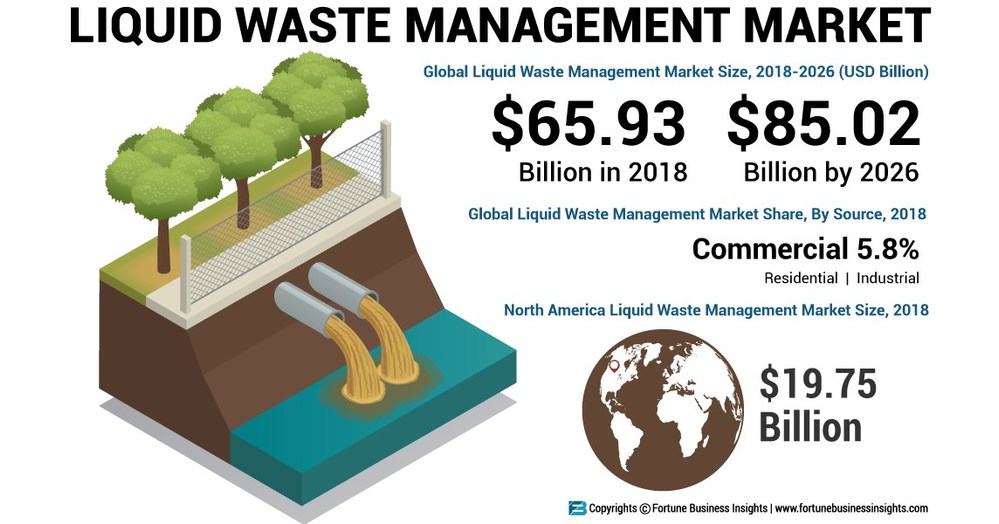Not known Details About Reclaim Waste
Not known Details About Reclaim Waste
Blog Article
Our Reclaim Waste Ideas
Table of ContentsHow Reclaim Waste can Save You Time, Stress, and Money.The Basic Principles Of Reclaim Waste The Ultimate Guide To Reclaim WasteReclaim Waste Things To Know Before You BuyGetting My Reclaim Waste To Work
Explore the kinds, incidents, and types of liquid waste. Residential sewer waste refers to the waste and items from a residential septic container. This sort of waste is created by human beings in homes, schools, and various other structures. This only includes sewage-disposal tanks that have a drainpipe field. The proper management and disposal of residential sewer waste require fluid waste to be transferred to a sewer treatment plant where the correct techniques and tools are used to purify and deal with waste.
Industrial waste typically includes possible risks, such as combustible materials or a blend of fluid and solid waste items, and requires an advanced and thorough disposal process. The disposal of business waste typically involves the filtering of waste before transportation to guarantee safe and correct disposal. Hazardous waste is developed from by-products and runoff of industrial processes and manufacturing.
This sort of waste can not use the very same sewer management transportation or procedures as septic or commercial liquids. The commercial waste monitoring process requires the evaluation and screening of fluid waste prior to it undergoes the disposal procedure (liquid waste removal). Drainage waste is the liquid waste that originates from overflow and excess stormwater in highly inhabited locations or cities
Drainage waste can create contamination and flooding if not managed effectively. Making certain correct waste monitoring can protect against calamities and reduce ecological harm.
Facts About Reclaim Waste Uncovered
Contact PROS Providers today to discover our waste administration and disposal solutions and the appropriate ways to take care of the liquid waste you generate.
(https://www.mixcloud.com/reclaimwaste1/)Do you understand what happens to your water when you disengage, purge the toilet or drain pipes the washing device? No? Well, it deserves knowing. This so-called 'wastewater' is not only a crucial source yet, after treatment, will certainly be released to our land, rivers or the ocean. Utilized water from commodes, showers, baths, cooking area sinks, washings and industrial processes is called wastewater.

water used to cool down equipment or tidy plant and devices). Stormwater, a type of wastewater, is overflow that moves from farming and city areas such as roofs, parks, yards, roads, courses and rain gutters into stormwater drains pipes, after rain. Stormwater moves unattended straight to regional creeks or rivers, eventually getting to the sea.
Reclaim Waste - An Overview
In Queensland, most wastewater is dealt with at sewer treatment plants. Wastewater is carried from residential or commercial sites through a system of sewage systems and pump terminals, known as sewage reticulation, to a sewer treatment plant.
The Department of Natural Resources advises regional federal governments regarding managing, operating and keeping sewerage systems and treatment plants. advice In unsewered locations, city governments may call for householders to install individual or house sewer treatment systems to deal with residential wastewater from commodes, cooking areas, restrooms and laundries. The Department of Natural Resources authorises the usage of family systems when they are proven to be effective.
Most stormwater receives no therapy. In some brand-new neighborhoods, treatment of some stormwater to remove litter, sand and crushed rock has started making use of gross toxin traps. Wastewater treatment takes place in 4 stages: Removes strong issue. Larger solids, such as plastics and various other items wrongly released to drains, are removed when wastewater is gone through displays.
Wastewater after that flows into large containers where solids work out and are removed as sludge. Oil and residue are skimmed from the surface. Makes use of little living microorganisms knows as micro-organisms to damage down and eliminate remaining dissolved wastes and fine particles. Micro-organisms and wastes are incorporated in the sludge. Eliminates nitrogen and phosphorus nutrients that could cause algal blossoms in our waterways and endanger marine life.
Examine This Report about Reclaim Waste
Nutrient removal is not offered in all sewer treatment plants because it needs expensive specialist tools. It is ending up being extra typical in Queensland. Clear liquid effluent produced after therapy might still contain disease-causing micro-organisms. If this effluent is released into waterways such as rivers or the sea, the micro-organisms will at some point pass away out.

A lot of wastewater flows right into the sewerage system. Under the Act, regional governments administer authorizations and permits for eco appropriate tasks (Ages) involving wastewater releases that might have a regional impact.
Rumored Buzz on Reclaim Waste
Surveillance provides accurate details about water quality and can confirm that licence problems are being met. The information obtained through monitoring offers the basis for making water high quality decisions.
Report this page